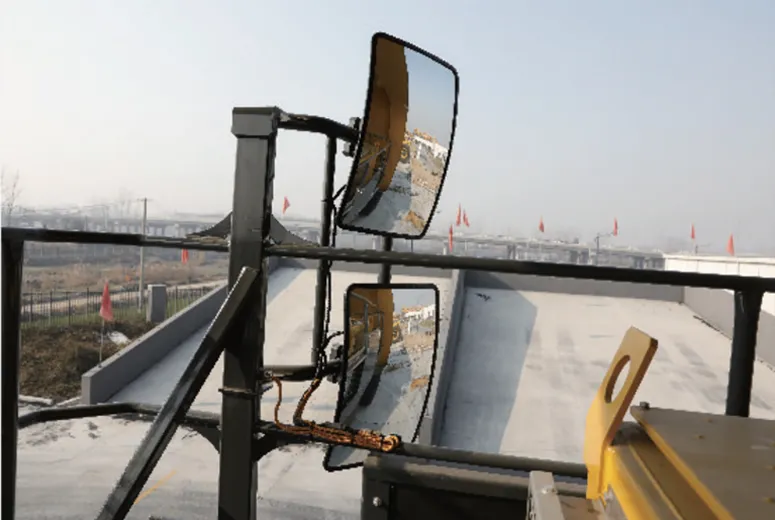Understanding the Importance of Tire Pressure Monitoring Systems in Modern Vehicles
Understanding the Tire Pressure Monitoring System (TPMS)
The Tire Pressure Monitoring System (TPMS) is a critical component in modern vehicles, designed to enhance safety and improve vehicle efficiency. As tire pressure is vital to the overall performance of a vehicle, the TPMS plays an essential role in monitoring tire conditions in real-time. This article delves into the functioning, types, benefits, and future of TPMS.
What is TPMS?
TPMS is an electronic system that continuously monitors the air pressure inside the tires. It alerts the driver when tire pressure falls below a predetermined level, which is crucial for maintaining optimal driving conditions. According to the National Highway Traffic Safety Administration (NHTSA), under-inflated tires can lead to decreased fuel efficiency, reduced tire life, and increased risk of tire blowouts, making TPMS an invaluable technology for vehicle safety.
How Does TPMS Work?
TPMS operates through two main types of sensors direct and indirect
.1. Direct TPMS This system uses sensors mounted on each tire to directly measure the air pressure. These sensors send real-time data to the vehicle’s onboard computer system. If the pressure in any tire drops below the recommended level, the system triggers a warning light on the dashboard. Direct TPMS is regarded as the more accurate of the two systems due to its ability to provide real-time tire pressure readings.
2. Indirect TPMS This system does not measure tire pressure directly. Instead, it utilizes the wheel speed sensors already existing in the anti-lock braking system (ABS) to monitor the rotation of each tire. If a tire is under-inflated, it has a different rotation speed compared to properly inflated tires. The system then calculates the pressure drop based on these differences. While this system is less accurate than direct TPMS, it is more cost-effective and is often found in older vehicle models.
Benefits of TPMS
The implementation of TPMS brings several significant benefits
tpms system

- Safety Enhancement Over three hundred fatalities, according to NHTSA data, occur annually due to accidents caused by under-inflated tires. With real-time monitoring and alerts, TPMS considerably reduces these risks.
- Fuel Efficiency Improvement Properly inflated tires can improve fuel economy by 3-5%. As low tire pressure increases rolling resistance, more fuel is consumed. TPMS helps maintain optimal pressure, maximizing fuel efficiency.
- Extended Tire Life Regular monitoring of tire pressure leads to reduced wear and tear, prolonging the life of the tires. This not only saves costs related to tire replacement but also contributes to environmental sustainability by minimizing waste.
- Enhanced Driving Experience Proper tire inflation contributes to improved handling and ride comfort. TPMS ensures that drivers can enjoy a smoother driving experience, which is particularly beneficial during long journeys.
Future of TPMS
As vehicle technology continues to advance, the future of TPMS looks promising. Innovations in sensor technology and data communication can lead to even greater accuracy and efficiency. For example, advancements in wireless technology may enable tires to communicate with the vehicle's computer systems more effectively. Furthermore, the integration of TPMS with other vehicle diagnostic systems will provide a holistic view of vehicle health.
The automotive industry is also moving towards the development of smart tires, which would incorporate not just pressure monitoring but also temperature and tread depth analysis. These features could help predict tire failure before it happens, allowing for proactive maintenance and further enhancing safety.
Conclusion
The Tire Pressure Monitoring System is more than just a convenience feature; it is a critical safety component that significantly impacts vehicle performance and driver safety. As technology evolves, TPMS will likely become more integrated with vehicle systems, leading to a safer and more efficient driving experience. For anyone who values road safety, understanding and properly maintaining tire pressure with the help of TPMS is essential. In a world where vehicle technology is rapidly advancing, TPMS stands as a testament to the importance of innovation in enhancing everyday driving safety.
-
SINOTRUK HOWO 84 Electric Dump Truck for Eco-Friendly Heavy HaulingNewsJul.26,2025
-
The Fast 16-Gear Manual Transmission Assembly for Heavy TrucksNewsJul.25,2025
-
Mercedes Benz Actros 1848 42 Tractor Truck for Sale - Reliable PerformanceNewsJul.24,2025
-
High-Quality Water Pump Assembly for Sinotruk Trucks – Durable & ReliableNewsJul.23,2025
-
Premium Truck Engine Antifreeze Coolant Fluid for Heavy Duty VehiclesNewsJul.22,2025
-
FOTON View G7 Mini Bus: Affordable & Spacious TransportNewsJul.22,2025
Popular products

























